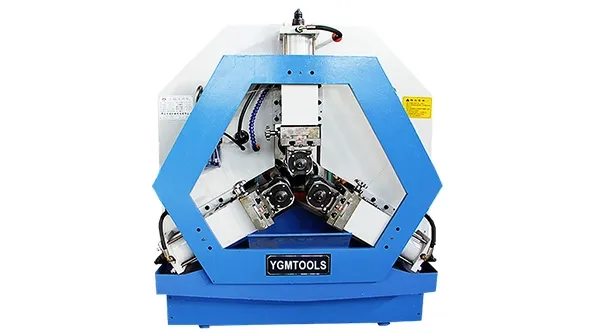
-
 Afrikaans
Afrikaans -
 Albanian
Albanian -
 Amharic
Amharic -
 Arabic
Arabic -
 Armenian
Armenian -
 Azerbaijani
Azerbaijani -
 Basque
Basque -
 Belarusian
Belarusian -
 Bengali
Bengali -
 Bosnian
Bosnian -
 Bulgarian
Bulgarian -
 Catalan
Catalan -
 Cebuano
Cebuano -
 Corsican
Corsican -
 Croatian
Croatian -
 Czech
Czech -
 Danish
Danish -
 Dutch
Dutch -
 English
English -
 Esperanto
Esperanto -
 Estonian
Estonian -
 Finnish
Finnish -
 French
French -
 Frisian
Frisian -
 Galician
Galician -
 Georgian
Georgian -
 German
German -
 Greek
Greek -
 Gujarati
Gujarati -
 Haitian Creole
Haitian Creole -
 hausa
hausa -
 hawaiian
hawaiian -
 Hebrew
Hebrew -
 Hindi
Hindi -
 Miao
Miao -
 Hungarian
Hungarian -
 Icelandic
Icelandic -
 igbo
igbo -
 Indonesian
Indonesian -
 irish
irish -
 Italian
Italian -
 Japanese
Japanese -
 Javanese
Javanese -
 Kannada
Kannada -
 kazakh
kazakh -
 Khmer
Khmer -
 Rwandese
Rwandese -
 Korean
Korean -
 Kurdish
Kurdish -
 Kyrgyz
Kyrgyz -
 Lao
Lao -
 Latin
Latin -
 Latvian
Latvian -
 Lithuanian
Lithuanian -
 Luxembourgish
Luxembourgish -
 Macedonian
Macedonian -
 Malgashi
Malgashi -
 Malay
Malay -
 Malayalam
Malayalam -
 Maltese
Maltese -
 Maori
Maori -
 Marathi
Marathi -
 Mongolian
Mongolian -
 Myanmar
Myanmar -
 Nepali
Nepali -
 Norwegian
Norwegian -
 Norwegian
Norwegian -
 Occitan
Occitan -
 Pashto
Pashto -
 Persian
Persian -
 Polish
Polish -
 Portuguese
Portuguese -
 Punjabi
Punjabi -
 Romanian
Romanian -
 Russian
Russian -
 Samoan
Samoan -
 Scottish Gaelic
Scottish Gaelic -
 Serbian
Serbian -
 Sesotho
Sesotho -
 Shona
Shona -
 Sindhi
Sindhi -
 Sinhala
Sinhala -
 Slovak
Slovak -
 Slovenian
Slovenian -
 Somali
Somali -
 Spanish
Spanish -
 Sundanese
Sundanese -
 Swahili
Swahili -
 Swedish
Swedish -
 Tagalog
Tagalog -
 Tajik
Tajik -
 Tamil
Tamil -
 Tatar
Tatar -
 Telugu
Telugu -
 Thai
Thai -
 Turkish
Turkish -
 Turkmen
Turkmen -
 Ukrainian
Ukrainian -
 Urdu
Urdu -
 Uighur
Uighur -
 Uzbek
Uzbek -
 Vietnamese
Vietnamese -
 Welsh
Welsh -
 Bantu
Bantu -
 Yiddish
Yiddish -
 Yoruba
Yoruba -
 Zulu
Zulu
thread rolling machine flat die
The Role of Flat Die Thread Rolling Machines in Modern Manufacturing
In the ever-evolving world of manufacturing, efficiency and precision play crucial roles in producing high-quality products. Among the various methods employed in metalworking, thread rolling stands out as a favored technique for creating strong and durable threads on fasteners, such as bolts and screws. A significant component of this process is the flat die thread rolling machine, which has revolutionized the way threaded components are manufactured.
Thread rolling is a cold forming process that uses hardened dies to shape workpieces into the desired thread profile without removing material. This method is lauded for several advantages over traditional machining techniques. Firstly, it enhances the physical properties of the material. By deforming the metal rather than cutting it, thread rolling increases the density of the material, resulting in stronger threads that can better withstand stress and fatigue.
The Role of Flat Die Thread Rolling Machines in Modern Manufacturing
One of the significant benefits of flat die thread rolling machines is their ability to produce a wide range of thread sizes and profiles. This versatility is essential in industries such as automotive, aerospace, and construction, where various fasteners are required to meet specific design and safety standards. Furthermore, because the thread rolling process does not generate chips or waste material, manufacturers benefit from reduced production costs and a more sustainable approach to metalworking.
thread rolling machine flat die

Another important aspect of flat die thread rolling machines is their capability to produce threads that exhibit superior surface finishes. The cold working process improves the surface integrity of the threads, making them smoother and more resistant to wear. High-quality threads are critical for ensuring proper engagement and load distribution when fastened, thereby enhancing the reliability of the final product.
In addition to mechanical advantages, the integration of advanced technology into flat die thread rolling machines has led to significant innovations. Modern machines are often equipped with digital controls, allowing for real-time monitoring and adjustments during the rolling process. These technological advancements enable manufacturers to optimize production parameters, reduce downtimes, and ensure consistent quality control.
The demand for threaded components continues to grow as industries expand and evolve. With advancements in material science and engineering, the requirements for fasteners are becoming increasingly stringent. Flat die thread rolling machines are at the forefront of meeting these demands, providing manufacturers with the tools needed to produce high-quality fasteners that meet increasingly rigorous standards.
Furthermore, the trend toward automation in manufacturing also impacts the operation of flat die thread rolling machines. Automated systems can be employed to handle material loading and unloading, as well as to conduct quality checks, ensuring that the production line operates seamlessly. Such systems not only save time but also reduce the risk of human error, contributing to higher overall fabricating standards.
In conclusion, flat die thread rolling machines represent a significant advancement in the field of manufacturing. They combine efficiency, versatility, and quality in producing threaded fasteners, making them indispensable in various industries. As technology continues to progress, the capabilities and applications of flat die thread rolling machines are likely to expand further, ensuring their relevance in the future of manufacturing. The enduring focus on strength, precision, and cost-effectiveness reaffirms their importance as a fundamental tool in modern metalworking environments.
